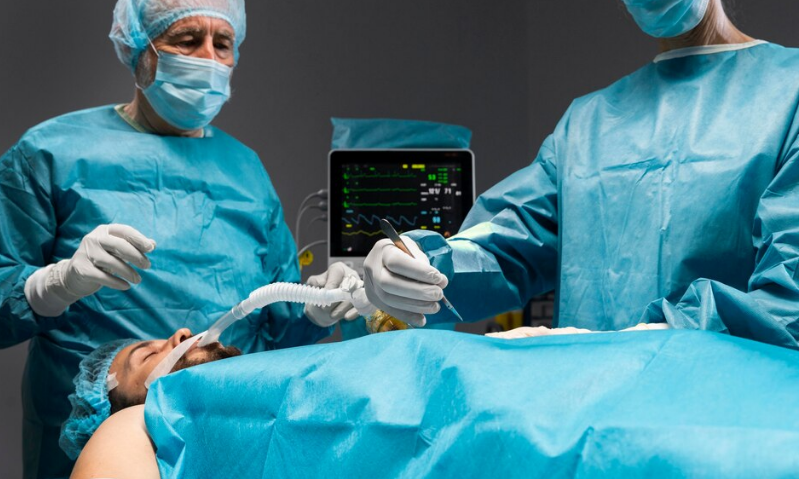A colonoscopy is frequently referred to as “minor surgery.” Everything about it feels surgical: the gown, the sedative, the paperwork. However, in the strictest sense of the word, a colonoscopy is not surgery in the traditional sense of the word. However, it’s also not your typical outpatient examination.
Surgery is defined in medicine as making incisions through the skin or tissues below it. That is not what a colonoscopy does. To examine the colon from the inside, a colonoscope a long, flexible camera is carefully inserted through the rectum. There is only internal exploration using high-definition optics; there is neither an incision nor sutures. Nevertheless, it’s simple to see why people automatically associate it with surgery.
Colonoscopy: Key Medical and Procedural Insights
| Aspect | Details |
|---|---|
| Procedure Name | Colonoscopy |
| Medical Category | Diagnostic/Preventive Procedure |
| Is It Surgery? | No, but it’s classified as minimally invasive |
| Performed By | Gastroenterologists or Colorectal Surgeons |
| Sedation Required | Yes, typically conscious sedation or general anesthesia |
| Hospital Stay Required | No, usually an outpatient procedure |
| Purpose | Colon cancer screening, diagnostics, polyp removal, biopsy |
| Risks | Bleeding, perforation, infection, sedation complications |
| Pre-Procedure Preparation | Clear-liquid diet and bowel cleanse via strong laxatives |
| Recovery Time | 24 hours for sedation; return to routine activities often within a day |
| Reference | Cleveland Clinic – Colonoscopy |
Physicians frequently take action during a colonoscopy rather than merely watching. You can immediately snare and remove a suspicious polyp. Tissue may be sent for biopsy or cauterization. These actions are remarkably similar to minor surgical procedures, and they are carried out through the scope itself. Nevertheless, they fall under procedures rather than operations because they don’t involve a scalpel.

Celebrities have been surprisingly successful in demythologizing this poorly understood process in recent years. Ryan Reynolds and Rob McElhenney weren’t merely being sly when they documented their colonoscopies for a public awareness campaign. They were assisting in the normalization of a life-saving screening technique, especially for men who might otherwise shun it due to pride or fear.
Semantics shapes experience in healthcare. For example, a colonoscopy that is classified as “preventive care” is frequently completely covered by insurance, with no deductible or co-pay. However, that billing result might be very different if it were called “surgery.” Therefore, the distinction has cultural, psychological, and financial significance in addition to being academic.
From a clinical perspective, colonoscopy falls under the larger heading of endoscopy, which refers to procedures that employ a scope to reach internal organs without creating external incisions. The colonoscope avoids the trauma and dangers of traditional surgical access by entering through natural pathways, much like a drone entering a building through the front door.
Many patients may find the pre-procedure phase of the colonoscopy more intimidating than the actual procedure. A day of clear liquids and a highly successful laxative regimen are part of the preparation, which aims to completely empty the colon. It’s important, but it’s not pretty. Better visibility from a clean colon increases the likelihood of spotting disease early.
Most patients go home a few hours after the procedure. By morning, they return to their regular activities, barring uncommon complications. In contrast to surgeries that necessitate days or even weeks of recuperation, a colonoscopy is remarkably effective and remarkably minimally invasive.
Colonoscopy is explicitly listed under procedural, not surgical, categories in medical coding systems such as CPT (Current Procedural Terminology). For billing logistics, some of its components, such as polyp removal, might be classified as “surgical services.” Confusion is frequently caused by this overlapping terminology, particularly when the same physician who may perform open surgery also performs your colonoscopy.
The way colonoscopy lies at the nexus of minor therapeutic intervention and preventive medicine is especially intriguing. It takes action in addition to diagnosing. Early detection and removal of a polyp can prevent cancer from ever developing. That is transformative as well as convenient.
Public health messaging has changed in recent years due to an increase in colorectal cancer among younger adults. Colonoscopies, which were previously only advised for people over 50, are now advised as early as age 45, or even earlier, depending on risk factors. Influencers and advocacy organizations are putting a lot of effort into redefining it as an empowered act of self-preservation rather than an aging ritual.
The perception is gradually changing as a result of focused media campaigns and increasing social proof. Talk shows, podcasts, and social media platforms are now openly discussing colonoscopies instead of whispering about them in waiting rooms. This openness is especially helpful in lowering stigma and boosting adoption.
In the end, determining whether a colonoscopy qualifies as surgery is similar to determining whether a flight simulator qualifies as flying. Although it doesn’t entail the same degree of physical intrusion, it feels serious, employs the same tools, and produces some of the same results. However, the effect can be equally, if not more, important.
